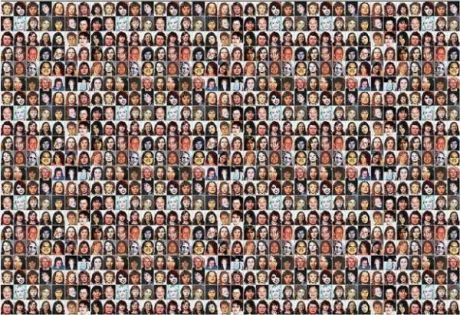Features
You are here
Murdered and missing indigenous women: why?

February 10, 2015
February 14 marks the annual women’s memorial march for missing and murdered Indigenous women in cities across Canada and Quebec. The march originated 25 years ago with the vigil held by women in Vancouver’s Downtown Eastside, whose postal code represents the lowest income area in the country.
In Toronto and elsewhere the event is organized by No More Silence, a group working with others to stop the murders and disappearances of Indigenous women. Its Facebook page states: “We stand in defense of our lives and to demonstrate against the complicity of the state in the ongoing genocide of Indigenous women and the impunity of state institutions and actors (police, RCMP, coroners’ offices, the courts, and an indifferent federal government) that prevents justice for all Indigenous Peoples.”
There have been longstanding calls by indigenous organizations, like the Native Women’s Association of Canada and the Assembly of First Nations, for an inquiry into the murders and disappearances. In January 2015 the same call came from the Inter-American Commission on Human Rights, which, in addition to calling for an inquiry, recommended that the government respond to the social and economic factors leading to higher risks of violence for Indigenous women. Here is a look at some of those factors.
Colonization
Indigenous women are significantly more at risk of violence because of the impact of colonization. The twin tragedies of residential school (with its attempts to destroy indigenous culture for all time) and poverty (caused by dislocation from traditional sources of living) create numerous sources of vulnerability for Indigenous women, and Indigenous men for that matter.
It is poverty that created the Highway of Tears in northern BC, where Indigenous women cannot afford the bus to travel between towns. So they hitchhike, leaving them prey to violent offenders.
It is poverty that makes “the authorities” see Indigenous children being “neglected” and in need of removal from their families. Such children are often taken into the care of, or adopted by, non-Indigenous foster or adoptive parents. This means dislocation from the child’s family, community, culture and pride in being Indigenous.
It is the legacy of residential schools that entrenches alienation, frequently leading to addictions, increasing the vulnerability of those seeking help, sometimes “in all the wrong places”, with offenders who are racist and misogynist.
Violence Against Women
It is important that recent years have seen women’s groups calling for an end to violence against women. Rape culture is reality, not a fad topic among academics. Those women who are at the bottom of the economic ladder face the most brutal side of rape culture, and Indigenous women are among the poorest of the poor.
But violence is a requirement for our economic system to survive. War is often the first resort when the scramble for resources is on. To induce people to fight in a war requires the ruling class to try and inculcate us with a tolerance for violence. So, offenders will strike the vulnerable because they feel emboldened by the ruling class’s encouragement to show force.
It is inconceivable that there would be violence against women in a society where differences were only allowed to be settled in a peaceful manner, where war was not an option.
Racism
Capitalism could not have been created without racism, taking the forms of mass slavery, and the holocaust of Indigenous peoples in “south America” caused by the European ruling class’s craving for minerals. Capitalism could not have created its imperial empires in the nineteenth century without the racist de-humanization of the peoples of Asia and Africa.
Capitalism cannot continue without racism, as found today in everything from immigrations policies to police racial profiling. And capitalist Canada would not be possible without the historic and continuing dislocation of Indigenous peoples from their traditional territories, as required by extraction industries like oil, gas and forestry.
Racism cheapens the lives of Indigenous peoples and makes the murder and disappearance of Indigenous women OK in the minds of racists.
Resistance
Harper’s government has rejected the demand for an inquiry into missing and murdered Indigenous women, promising “action” instead. As if. Both the Liberals and NDP have committed to an inquiry. But their positions, especially for the Liberals, would likely not be in place were it not for the courage and persistence of Indigenous women’s groups, both historic organizations like the Native Women’s Association of Canada, and more recent grassroots movements like Idle No More and No More Silence.
Allies
Support for Indigenous women has become increasingly visible and vocal from outside indigenous communities. Faith groups, women’s organizations, trade unions, student unions and others have been happy to participate in marches like the ones on February 14, taking their lead from Indigenous activists.
The continued strength of Indigenous peoples and their values, combined with mass support from non-Indigenous peoples, is the only solution, the only way we will begin to see a society built on peace. Where the murder and disappearances of Indigenous peoples will be things of the past.
Visit Women’s Memorial March to find an event near you.
Section:










